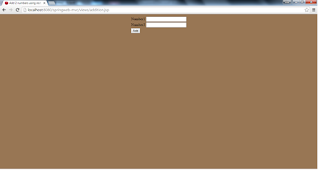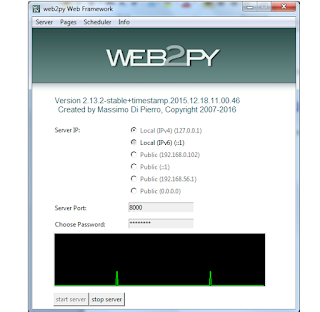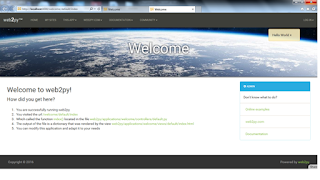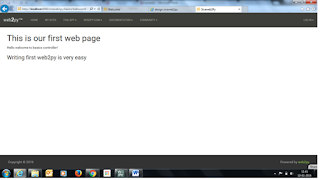State pattern, which allows objects to behave in different ways depending on internal state. State is used when you need a class to behave differently, such as performing slightly different computations, based on some arguments passed through to the class.
Problem: Vehicle different status details
1. VehicleNotificationStatus – having different status details about vehicle.
package com.siva;
public enum VehicleNotificationStatus {
VEHICLE_ORDERED("Vehicle-Ordered"),
VEHICLE_ORDER_SUBMITTED_FOR_BODY_BUILD("Vehicle-Order-Submitted-For-Body-Build"),
VEHICLE_BODY_SHOP_COMPLETED("Vehicle-Body-shop_completed"),
VEHICLE_DELIVERED("Vehicle-Delivered"),
INVALID("Invalid");
VehicleNotificationStatus(String _type){
this.type=_type;
}
private String type;
public String getType() {
return type;
}
public void setType(String type) {
this.type = type;
}
}
2. VehicleStatus interface to evaluate the different statues.package com.siva;
public interface VehicleStatus {
public VehicleNotificationStatus evaluateVehicleStatus(String status);
}
3. Different statues classes to implement the VehicleStatus interface.VehicleOrdered is one type of status class is to implement VehicleStatus
package com.siva.status;
import com.siva.VehicleNotificationStatus;
import com.siva.VehicleStatus;
public class VehicleOrdered implements VehicleStatus{
@Override
public VehicleNotificationStatus evaluateVehicleStatus(String status) {
System.out.println("VehicleOrdered state start");
if(VehicleNotificationStatus.VEHICLE_ORDERED.getType().equalsIgnoreCase(status)){
return VehicleNotificationStatus.VEHICLE_ORDERED;
}
return VehicleNotificationStatus.INVALID;
}
}
2. VehicleForBodyBuild is one type of status class is to implement VehicleStatus package com.siva.status;
import com.siva.VehicleNotificationStatus;
import com.siva.VehicleStatus;
public class VehicleForBodyBuild implements VehicleStatus{
@Override
public VehicleNotificationStatus evaluateVehicleStatus(String status) {
System.out.println("VehicleForBodyBuild state start");
if(VehicleNotificationStatus.VEHICLE_ORDER_SUBMITTED_FOR_BODY_BUILD.getType().equalsIgnoreCase(status)){
return VehicleNotificationStatus.VEHICLE_ORDER_SUBMITTED_FOR_BODY_BUILD;
}
return VehicleNotificationStatus.INVALID;
}
}
3. VehicleDelivered is one type of status class is to implement VehicleStatus package com.siva.status;
import com.siva.VehicleNotificationStatus;
import com.siva.VehicleStatus;
public class VehicleDelivered implements VehicleStatus{
@Override
public VehicleNotificationStatus evaluateVehicleStatus(String status) {
System.out.println("VehicleDelivered state start");
if(VehicleNotificationStatus.VEHICLE_DELIVERED.getType().equalsIgnoreCase(status)){
System.out.println();
return VehicleNotificationStatus.VEHICLE_DELIVERED;
}
return VehicleNotificationStatus.INVALID;
}
}
4. Now we need to write Factory class which can be implement all this status details.
package com.siva;
import com.siva.status.VehicleDelivered;
import com.siva.status.VehicleForBodyBuild;
import com.siva.status.VehicleOrdered;
public class VehicleStatusFactory {
public static VehicleStatus createStatus(VehicleNotificationStatus status){
if(status.equals(VehicleNotificationStatus.VEHICLE_ORDERED)){
return new VehicleOrdered();
}
else if(status.equals(VehicleNotificationStatus.VEHICLE_ORDER_SUBMITTED_FOR_BODY_BUILD)){
return new VehicleForBodyBuild();
}
else if(status.equals(VehicleNotificationStatus.VEHICLE_DELIVERED)){
return new VehicleDelivered();
}
else
return null;
}
}
5. We have completed the all the classes related to State pattern, now we need to write test class to see the results.
package com.siva;
public class TestStateDesignPattern {
public static void main(String[] args) {
VehicleStatus vehicleStatus =VehicleStatusFactory.createStatus(VehicleNotificationStatus.VEHICLE_ORDERED);
VehicleNotificationStatus notificationStatus = vehicleStatus.evaluateVehicleStatus(VehicleNotificationStatus.VEHICLE_ORDERED.getType());
System.out.println(notificationStatus);
vehicleStatus =VehicleStatusFactory.createStatus(VehicleNotificationStatus.VEHICLE_ORDER_SUBMITTED_FOR_BODY_BUILD);
VehicleNotificationStatus notificationStatus1 = vehicleStatus.evaluateVehicleStatus(VehicleNotificationStatus.VEHICLE_ORDER_SUBMITTED_FOR_BODY_BUILD.getType());
System.out.println(notificationStatus1);
vehicleStatus =VehicleStatusFactory.createStatus(VehicleNotificationStatus.VEHICLE_DELIVERED);
VehicleNotificationStatus notificationStatus2 = vehicleStatus.evaluateVehicleStatus(VehicleNotificationStatus.VEHICLE_DELIVERED.getType());
System.out.println(notificationStatus2);
}
}
Output:
VehicleOrdered state start VEHICLE_ORDERED VehicleForBodyBuild state start VEHICLE_ORDER_SUBMITTED_FOR_BODY_BUILD VehicleDelivered state start VEHICLE_DELIVERED

This is how state pattern will work.
Thanks for viewing this post.






































